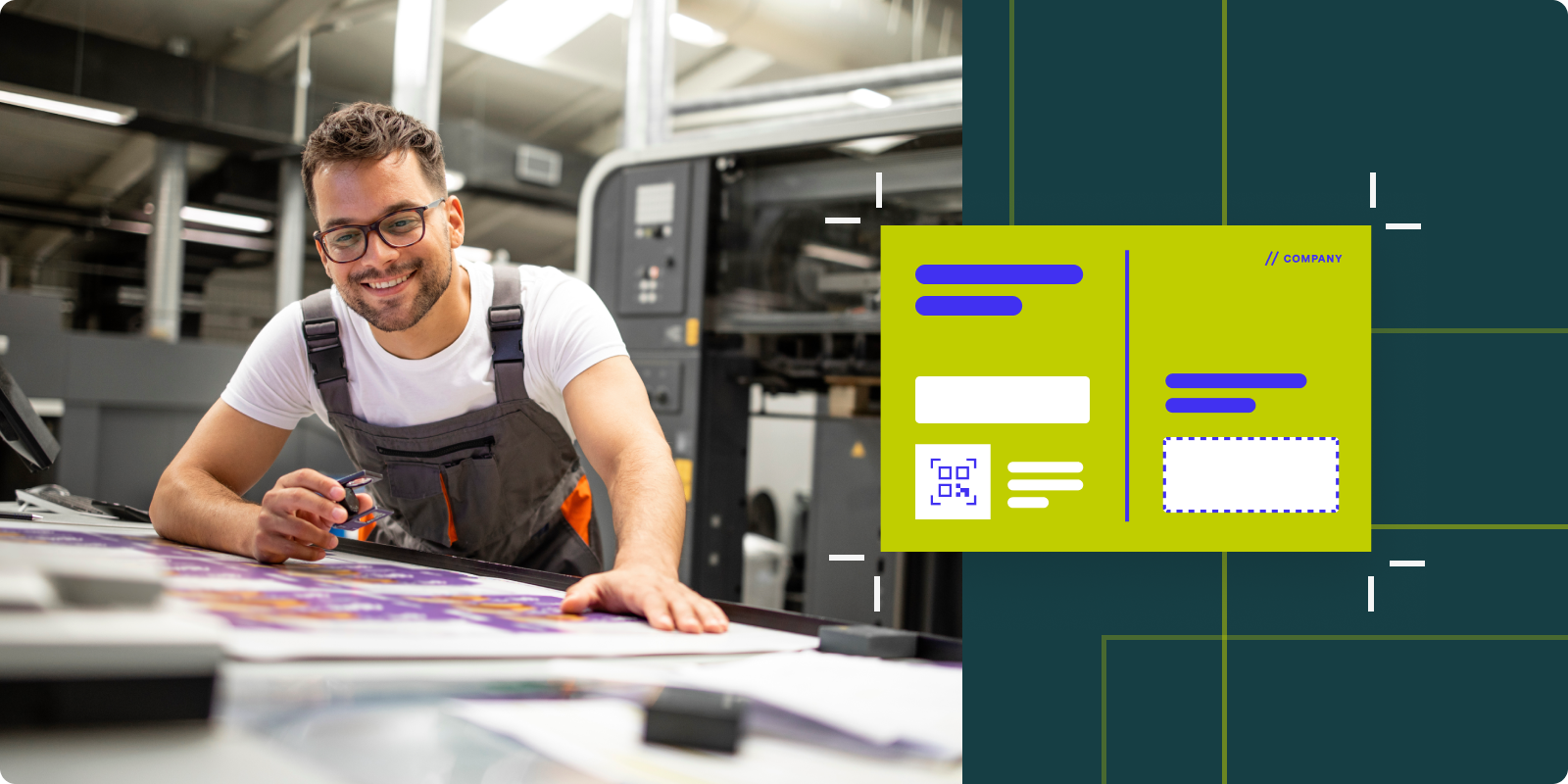


Direct mail printing and fulfillment is how your marketing ideas become real mail pieces that land in your customers’ hands. It’s the behind-the-scenes process that handles everything from design prep to doorstep delivery.
While digital marketing dominates most conversations, direct mail marketing continues delivering some of the highest conversion rates across channels—but only when executed properly. Here’s how the workflow comes together and what to look for in a fulfillment partner.
The process starts with your digital files and data, then moves through printing, assembly, postal prep, and finally delivery. Think of it like a production line where every step builds on the last.
Designers prepare creative files with address blocks, personalization tokens, and bleed lines. Proofing checks for accuracy, color consistency, and postal compliance before mass production.
Production teams choose materials, paper weight, and finishing touches. Digital presses enable variable data printing, so each piece can be personalized while maintaining brand consistency.
Fulfillment teams confirm envelopes, inserts, and any packaging materials are in stock. Many fulfillment centers warehouse common inventory onsite to avoid delays.
Automated machines collate inserts, fold brochures, and seal envelopes or polywrap items. Accuracy stays high even at thousands of pieces per hour.
Mail is bundled by ZIP code, barcoded with Intelligent Mail Barcodes (IMb), and qualified for postal discounts. Sorted mail is then inducted into USPS for delivery.
CASS certification ensures addresses meet USPS standards. NCOA updates recipient addresses for people who’ve moved in the last 48 months.
IMb codes enable real-time tracking and postal discounts.
By grouping multiple mailings by ZIP, commingling can cut postage costs by 10–15%.
Variable data printing personalizes text, images, and offers by pulling directly from your CRM. Trigger-based timing ensures mail arrives when it’s most relevant, like cart abandonment or renewal dates.
G7 guarantees color consistency. HIPAA-certified facilities handle sensitive data securely.
Automated checks monitor print alignment and color accuracy throughout production, preventing costly errors.
Modern direct mail is trackable like digital.
Read more about direct mail ROI.
Traditional print shops are slower but cheap at scale. EDDM is quick and low-cost but lacks personalization. Automated platforms like Lob balance speed, flexibility, and ROI.
Choosing the right fulfillment partner impacts cost, quality, and campaign performance.
Questions to ask
Red flags
Traditional processes can take weeks and involve multiple vendors. Direct mail automation cuts that down to days with integrated workflows, real-time tracking, and no manual file transfers.
Lob’s Print Delivery Network automates every step—from design to delivery—so you get speed, scale, and measurable results.
Ready to see it in action? Book a demo.
FAQs about direct mail printing and fulfillment
FAQs

How long does printing and fulfillment take?
Automated platforms: 2–5 business days. Traditional shops: 2–4 weeks.
What minimum volume makes outsourcing cost-effective?
Usually several hundred pieces per month, depending on your internal resources.
Can you use recycled paper without delays?
Yes. Most fulfillment centers stock eco-friendly paper. Specialty stocks may take longer.
How do you handle undeliverable mail?
Professional partners provide return mail data and address correction to improve future campaigns.